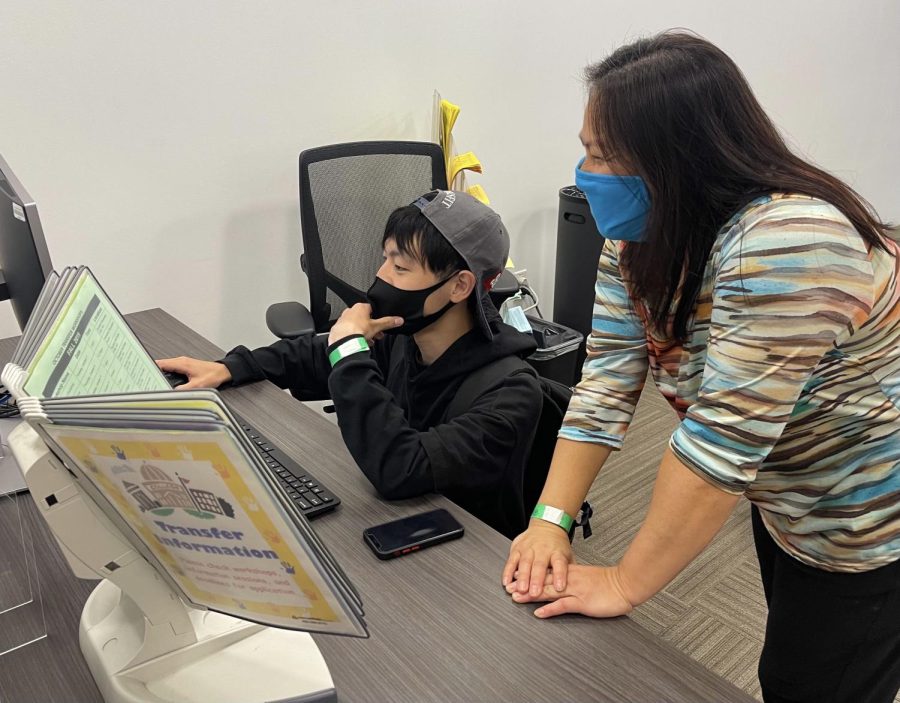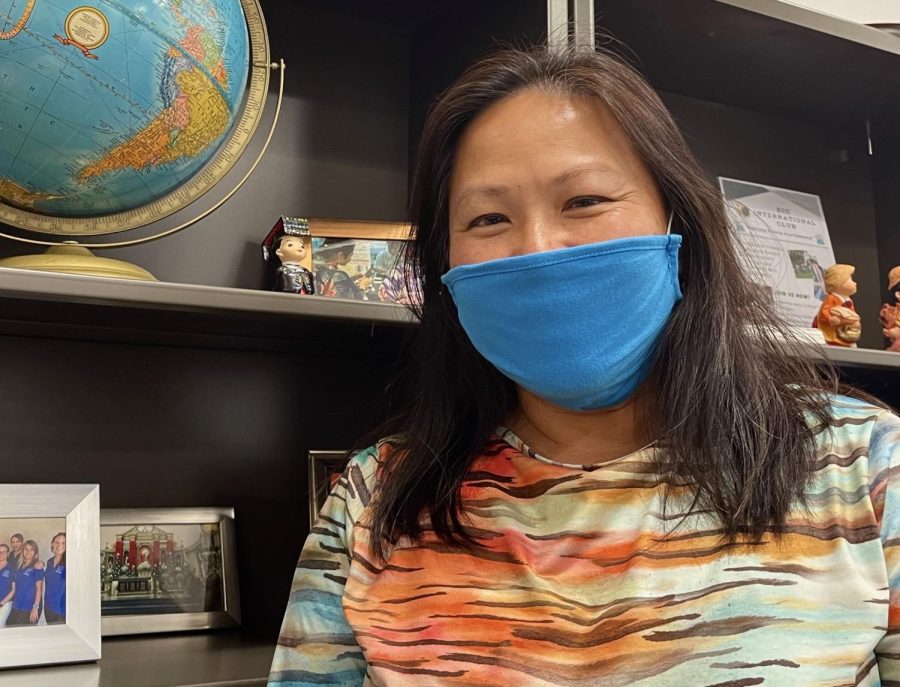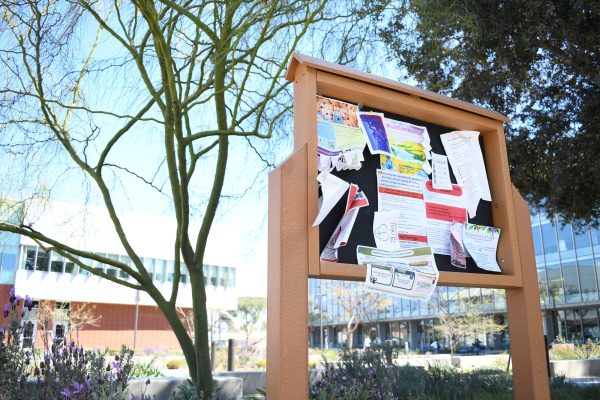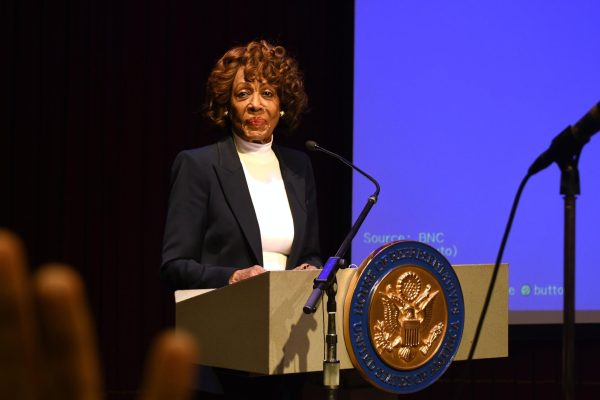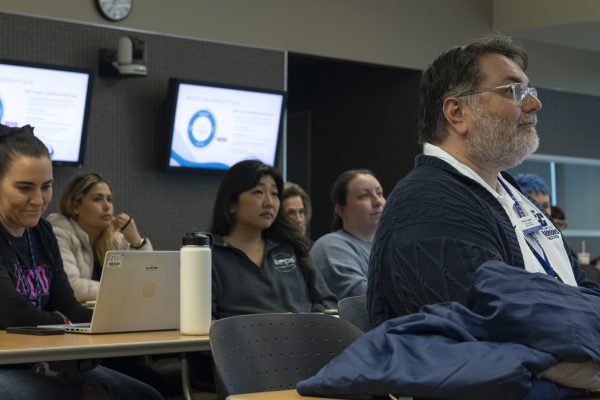L.A. County has seen an increase in anti-Asian hate crimes
Hatien Nguyen, an ECC adjunct counselor and human development professor helps a student access resources at the ECC International Student Center on Friday, Nov. 5. Nguyen says it’s the responsibility of all students, staff and faculty to ensure that everyone at ECC is welcome on campus, protected, and able to achieve their goals despite barriers. “That’s what equity means,” Nguyen says. Photo by Kim McGill/The Union
A report by the Human Relations Commission indicates an increase in anti-Asian hate crimes in Los Angeles County over the past year.
Los Angeles County Human Relations Commission released a report saying that the number of anti-Asian hate crimes has gone up from 25 to 44 in the year 2020, a 76% increase. El Camino College (ECC) is located close to 23% of the reported incidents.
“I have never seen the level of fear and intimidation within the Asian community. I know many people who said they were more scared of being attacked on the street than getting COVID-19,” Marshall Wong said, principal author of the report and senior intergroup relations specialist at the Human Relations Commission (HRC).
“I have felt racism encounters in the community. I’m from Korea and some U.S. citizens get very rude, even scream at me sometimes,” said Myounggi Yeo who lives in Gardena and is studying for an Associate’s degree in Air Conditioning and Refrigeration at ECC.
Across L.A. County, the highest rate of anti-Asian attacks happened in Torrance (six) or on its borders with West Carson and Lomita (four) – 10 incidents total, or 23% of the total reported – despite the fact that the combined population of Torrance, Lomita and West Carson is only 188,085, or 1.8% of the county as documented by the most recent U.S. census.
Overall, the South Bay had 12 reported attacks, 27% of the total reported, despite representing only 7.4% of the County’s population.
“It’s maybe not surprising that there would be more incidents here in the South Bay,” Hatien Nguyen, adjunct faculty in human development and adjunct counselor at ECC, said.
Nguyen said there are areas of the county that have a larger concentration of Asian residents, but that the South Bay has a large Asian population living in a majority white area.
“That might put Asians at greater risk of discrimination and attacks,” Nguyen said.
Torrance is 74,333 (51.1%) White, 50,240 (34.5%) Asian, 3,955 (2.7%) African American, 554 (0.4%) Native American, 530 (0.4%) Pacific Islander, 7,808 (5.4%) from other races, and 8,018 (5.5%) from two or more races according to the most recent federal census count.
Diane Ujiiye, a mother, long-time resident of Gardena and third-generation Japanese-American, has been working as a community organizer for 40 years. She said she feels “really grateful and safe” in her close and supportive neighborhood where Asians, Blacks and Latinx residents, including many immigrants, “look out for each other.”
But she hasn’t felt as welcome and secure in other areas of the South Bay that are often wealthier and whiter.
“When I get into Torrance, Palos Verdes, Manhattan Beach and all the beach cities, I don’t feel so comfortable,” Ujiiye said.
Earlier this summer, Ujiiye and a friend experienced an incident with a jogger when walking on Redondo Beach.
“As she jogged past, she said ‘Chinese b—tches.’ She was jogging pretty fast, and by the time I processed it and turned around, she was down the beach already,” Ujiiya said.
A Korean friend of Ujiiye owns a restaurant in Long Beach that was vandalized during the start of Trump’s statements about the “China virus.” She remembers that restaurants in Torrance were also vandalized, as well as her Buddhist temple in Little Tokyo.
As a third-generation Japanese American woman, Ujiiye said she does not face the same level of hate as darker-skinned people and new immigrants.
“The risk is much greater for many others,” said Ujiiye.
Despite being close to the 23% of reported anti-Asian hate crimes, ECC has not had an increase in hate incidents, according to the campus police department.
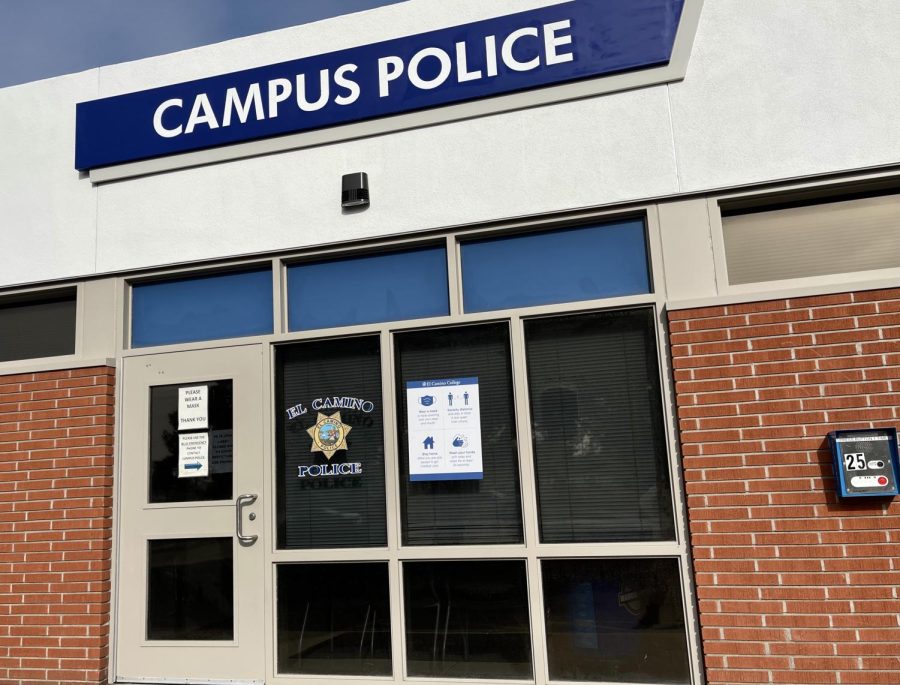
Safety “on campus is very different” than in the community, said Yeo, crediting the student resource center and the international student program for supporting him and other students.
Nguyen said that she has not heard from students, staff or faculty about increased hostility or anti-Asian racism at ECC, as it might be from ECC campus being empty.
“With a lot of students still virtual, professors and counselors should focus on being more culturally sensitive, raising awareness and continuing to discuss and improve equity on campus to ensure all students succeed,” Nguyen said.
Michael Trevis, Chief of the ECC Police Department could only recall two hate incidents in the thirteen years that he has been on campus. Both were graffiti of swastikas.
“Those swastikas appeared at the time when there were a lot of issues happening in the U.S. following the Charlottesville riot,” Trevis said, referring to the white-supremacist Unite the Right Rally that took place in Charlottesville, Virginia in August of 2017.
Under the federal Clery Act, colleges and universities that want to access federal funds are required to report annually on all crimes that happen on or near campus, including hate crimes. ECC’s 2020 Security Report is available online with Clery Act statistics included on page 55.
“It’s been our experience that people at ECC have a lot of class. Everyone is very respectful,” Trevis said. “Certainly, people have their own opinions, but they express themselves in a professional way. That’s Warrior pride.”
The release of the HRC’s report on anti-Asian hate crimes in L.A. County coincides with three anniversaries in L.A.’s and the nation’s long history of anti-Asian hate.
2021 marked 20 years since the 9-11 attacks that sparked hate crimes in both the Muslim and Asian community, 150 years since the 1871 Chinese Massacre in downtown L.A., lynching 19 Chinese men and boys and 80 years since the bombing of Pearl Harbor and the enactment of Executive Order 9066, authorizing the incarceration of more than 120,000 Japanese Americans.
L.A. County has the largest population of people with Japanese ancestry in the U.S., with one of the largest concentrations in Torrance. Internment camps during World War II dismantled neighborhoods throughout the South Bay.
“The report enables us to better understand a painful history that most people are not aware of. Attacks on the Asian community are not new,” Wong said.
Ever since Ujiiye’s family moved to America in the 1800s, they have been subjected to various derogatory terms. Ujiiye’s parents were even incarcerated during World War II as teenagers, she said, as they looked like “the enemy.”
“All of that history is carried in our collective psyche,” Ujiye said.
Although the HRC lists hate incidents, the group did not report on the specific causes of hate incidents.
“The report cannot draw a direct line to the cause of hate crimes or increasing attacks on the Asian community,” Wong said.
The HRC didn’t interview the suspects, and in many cases, they are never known. In 23% of the cases, people blamed the victims for COVID-19. In 25% of the cases, people made anti-immigrant comments.
“It’s not like people are doing this in a rational way. There are a number of high profile cases in other jurisdictions where suspects had long histories of mental illness,” Wong said.
But Wong also raised the significance of anti-Asian rhetoric and “rising anti-immigrant sentiment” from former President Trump and other officials.
“It is tone-setting when the president calls COVID the Chinese virus, Wuhan virus or Kung Flu,” Wong said.
Wong said, Asian-American leaders immediately warned against using racist rhetoric, and said that it could lead to an increase in violence, to which it did increase nationwide and included a number of homicides.
“Scapegoating and blaming Asian-Americans for COVID put a target on our backs,” Connie Chung Joe, chief executive officer of the L.A. office of Asian Americans Advancing Justice, (AAAJ) said.
As incidents of anti-Asian hate increased across the nation, Asians and allies lifted up solutions for schools and communities.
The HRC’s first priority for schools is to publicly identify and denounce hate incidents. Wong added that this means having policies in place to encourage people to understand what hate is, how to report it and how to address it.
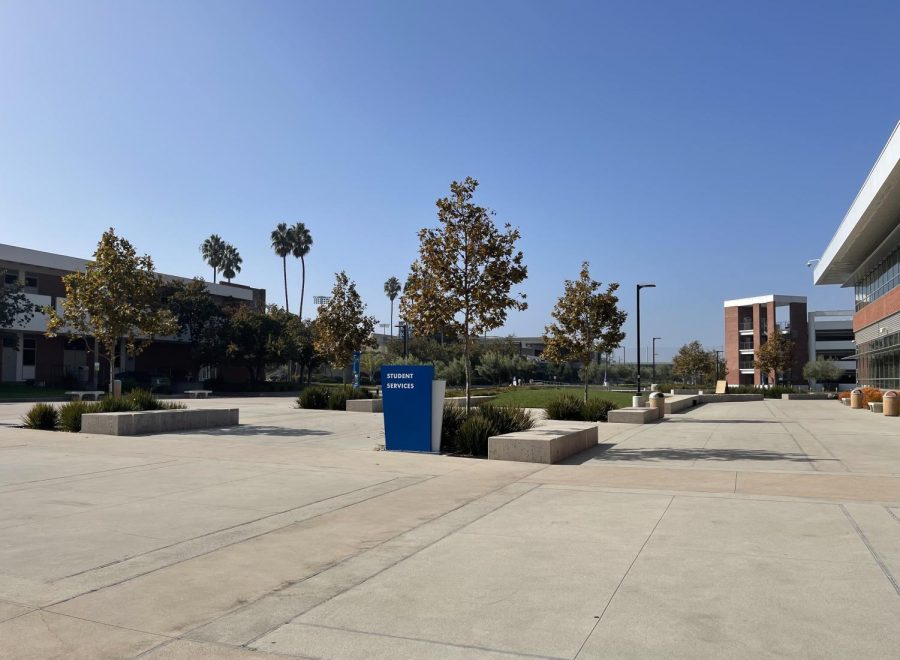
Changes in state law and local school district policies are also requiring the expansion of multi-cultural and ethnic studies.
“Schools have a responsibility to teach and promote Asian-American history,” Chung Joe said. “If our students don’t recognize this pattern then how can we stop it?”
There is also an increasing push in L.A. County and nationwide to address crime and violence as public health issues.
“We have the ability to prosecute hate crimes but, we are focusing more efforts on building alternatives to prosecution and incarceration, including community prevention and mediation,” L.A. County District Attorney George Gascon said at the Nov. 10 press conference releasing the complete HRC report on all hate crimes.
Similarly, Trevis said the ECC’s Police Department is increasing its focus on prevention, increased training for staff and faculty, and restorative justice to address specific incidents.
“Our campus police are not about arrests. That is not what we want to do,” Trevis said. “Our economy spends more money on jails and prisons than on public education.”
Trevis said ECC is increasingly relying on the AIMS Program – Assessment, Intervention and Management of Safety – a “behavioral intervention team” made up of ECC police, Title IX student conduct counselors, the Student Development Office and other campus resources. The program serves as a campus-based, restorative justice alternative to arrest and court.
“We talk to students and staff about crime prevention… in order to get ahead of issues and maintain a safe, tranquil and respectful environment,” Trevis said.
A free, online, one-hour bystander intervention workshop was developed by AAAJ and Hollaback! to train people how to challenge hate and support the victim.
“Incidents generally happen in public places – on the street, in parks, businesses and schools – and there are things we can do as allies or witnesses,” Chung Joe said.
Combatting hate begins with essential actions that all of us at ECC can take, Nguyen said.
“Correctly pronouncing a person’s name or knowing their correct identity makes everyone feel like they are respected for who they are.”
Ultimately, it is the responsibility of all students, staff and faculty to ensure that everyone at ECC is welcome on campus, protected and able to achieve their goals despite barriers, Nguyen said.
Community organizers and activists have been developing resources and networks where the Asian American and Pacific Islander (AAPI) community can share their stories, build solutions and implement action strategies.
Lee has used Instagram to promote “Seniors Fight Back,” including mobilizing volunteers to train Asian elders in self-defense. Other campaigns include Stand Against Hatred, L.A. vs. Hate, Hate Is a Virus, and Stop AAPI Hate, all of which began with the call for people to break their silence and share their experiences.
“By lifting up these stories, we give voice to the victims, and send a clear message to the community that enough is enough,” Robin Toma – Executive Director of the HRC said at the Nov. 10 press conference. “We will not tolerate hate in L.A. County,” Toma said.
Editor’s Note: Photos enlarged for readability on Wednesday, Dec. 29 at 9:16 p.m.
Editor’s Note Jan. 4, 2022, 4:53 p.m.: Story updated to remove draft notation.


